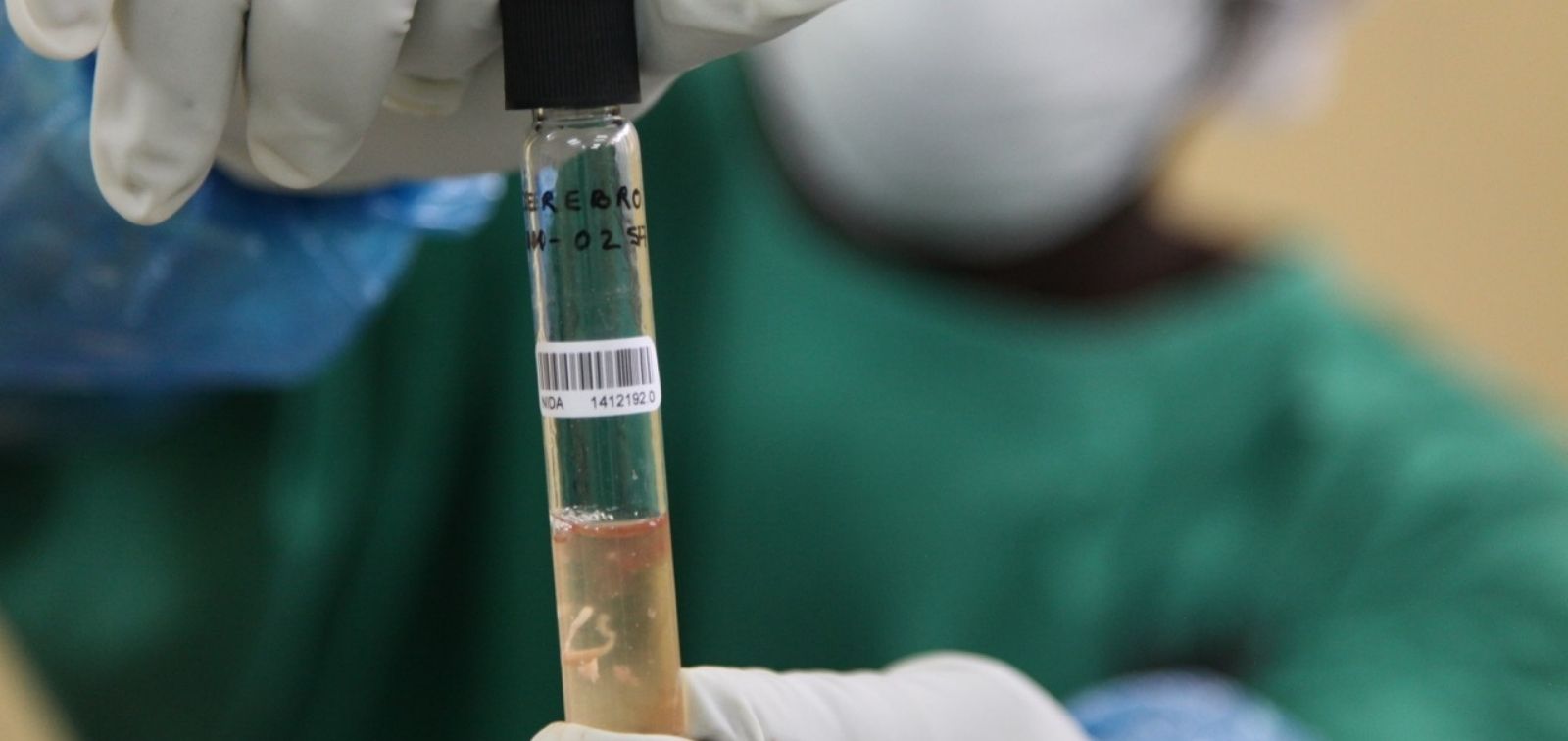Unveiling the Culprits
A new method to identify causes of death in low-income countries

Establishing the true causes of death in low-income countries is one of the central challenges in global health. ISGlobal researchers have developed an innovative post-mortem method that can be performed in low-resource settings and is reliable, feasible and culturally acceptable. This method has been validated for use across various population groups, including stillbirths, neonates, children, adults, and pregnant women. As the cornerstone of the global child mortality surveillance network (CHAMPS), it has been implemented in numerous research projects and is already providing valuable insights that can help to shape policies for reducing mortality among children, mothers, and adults worldwide.
What is the problem?
Accurately determining the cause of death is crucial for reducing mortality, particularly among children and mothers in settings where the mortality burden is unacceptably high and diagnostic resources are scarce. Ninety-nine percent of deaths in children under five years of age occur in low-and middle-income countries, yet the lack of reliable and timely data on the main causes of these deaths hinders efforts to prevent them. This data gap exists because many deaths occur at home or in remote areas where performing complete diagnostic autopsies (CDAs) is nearly impossible due to a lack of skilled personnel and infrastructure. Furthermore, complete autopsies often face resistance from local communities due to their disfigurative nature and cultural sensitivities. Alternative methods, such as verbal autopsies and clinical records, tend to be unreliable and frequently provide misleading information.
Key facts
What did our researchers do?
A new technique
To address this critical gap in data, ISGlobal researchers, led by Jaume Ordi, Clara Menéndez and Quique Bassat, developed a simplified, minimally invasive autopsy approach that is both feasible and culturally acceptable in low- and middle-income countries. This protocol, known as minimally invasive tissue sampling (MITS), uses fine biopsy needles to collect small tissue samples from several solid organs, along with blood and cerebrospinal fluid. Specially trained technicians, even those without advanced medical skills, can easily perform the procedure. The samples are then analysed in the laboratory using histological and microbiological methods to identify if and which pathogens were involved, and determine the exact pathway leading to death.
That is reliable
In 2013, ISGlobal, in collaboration with partners in Mozambique (CISM and Maputo Central Hospital) and Brazil (Fundação de Medicina Tropical Dr. Heitor Vieira Dourado, Manaus), with support from the Bill and Melinda Gates (BMGF) Foundation, launched the CaDMia project, followed by CaDMia-plus, to validate the performance of MITS technique against CDAs across various age groups - adults, children under 15, stillbirths, and neonatal and maternal deaths. The concordance between MITS and CDAs, considered the “gold standard”, was high, especially for deaths caused by infectious agents, which remain a leading cause of mortality in low-income countries.
Easier to implement
Healthcare providers described MITS as “simple, easy, and quick to perform” and highlighted its potential to meet families’ expectations for understanding the cause of death and provide evidence-based insights for disease management. Compared to CDAs, MITS was considered more feasible and acceptable because it is easier to implement and maintains the integrity of the body.
And more culturally acceptable
Notably, work conducted by the CISM’s social science team within the community revealed that MITS was well-received across diverse religious and socio-cultural settings. Using socio-anthropological approaches (observations, informal conversations, focus group discussions, rumour surveillance), the team’s findings highlight the importance of consent and transparency when implementing MITS and ensuring that families understand its benefits while respecting local customs.
Overall, these studies established MITS as a reliable, feasible and more readily acceptable tool to improve the understanding of causes of death in low-resource settings.

What changes has our research contributed to?
It is still too early for MITS to have a measurable impact on reducing mortality in low-resource settings. However, the technique is already contributing to mortality surveillance in the countries participating in the CHAMPS network, and is starting to provide important insights into causes of death among different age populations. For example, MITS results are being used by the Countrywide Mortality Surveillance for Action program in Mozambique, in collaboration with the Ministry of Health, to produce publicly available annual data on mortality and cause of death at national and subnational levels.
A new way of performing autopsies
The work performed in CadMia and CadMia-plus established MITS as a groundbreaking method for investigating causes of death without the need to conduct full autopsies. Already implemented in various African and Asian countries, MITS is providing valuable insights for shaping policies to reduce mortality. According to a special issue dedicated to the technique, MITS is enabling the expansion of pathology-based mortality surveillance. Teams worldwide are working to improve the methodology, build MITS capacities, draw lessons from small-scale implementation projects and explore its use in identifying infectious disease outbreaks.
Notably, the innovative approach and potential impact of the MITS technique have also garnered attention from the media and scientific communities, including a feature in Science and a 9-minute-long video in El País newspaper.
A new alliance for mortality surveillance
The innovative autopsy approach developed by ISGlobal serves as the methodological cornerstone of the MITS Alliance, a leading coalition including ISGlobal researchers focused on establishing MITS as a standard tool for mortality surveillance across all populations. The Alliance’s website offers resources for implementing MITS in different settings, including a “ready-to-use” MITS toolkit and a quality assurance portal, along with examples of MITS applications in research. A series of publications by the Alliance has highlighted the increasing adoption of this methodology at the global level to investigate causes of death, and its potential use in the context of infectious disease outbreaks, where CDAs are often deemed too risky.
Creation of the largest child health network
The MITS approach triggered the creation of CHAMPS (Child Health and Mortality Prevention Surveillance), a global network that “generates, tracks and shares accurate cause of death data on child mortality.” Launched in 2015 with a long-term vision and funding from the BMGF, CHAMPS operates in nine countries (Ethiopia, Kenya, Mali, Mozambique, Sierra Leone, South Africa and Nigeria in Sub-Saharan Africa, and Bangladesh and Pakistan in South Asia) to better understand the causes of child deaths, including stillbirths.
By 2023, the network had investigated more than 11,000 deaths, performed more than 6,600 MITS procedures, and assigned full cause of death in over 5,100 cases. This work has generated cumulative new knowledge to guide actions for reducing child mortality. For instance, infections contribute to more than half of child deaths in developing countries, with pneumonia responsible for up to 40% of these deaths. Malnutrition is the most common underlying cause and 82% of all child deaths in low-income countries could be prevented. The network has also uncovered hidden causes of death now recognised as significant contributors. This evidence provides the basis for specific actions designed to address these causes. For example, recent findings from CHAMPS in Ethiopia “support strategies to prevent neural tube defects, such as folate supplementation in pregnancy and food fortification,” according to a comment in The Lancet signed by officials from the Ethiopian Public Health Institute.
The BMGF’s vision is to establish a surveillance platform that can measure and track child mortality long enough (twenty years) to provide -at last- the credible baseline data that will underpin global child mortality statistics and help to transform data into action at the local, national and global levels.
Strengthened capacities in low-income countries
As part of the CaDMIA-Plus project, ISGlobal set up a training programme on MITS, conducted mostly in Barcelona and at Maputo Central Hospital, with the idea of encouraging the adoption of MITS and training the next generation of mortality researchers throughout the world. To date, over 100 research groups all over the world have benefited from such training and are implementing MITS as part of their research and surveillance efforts.
Links and References
- Bassat Q, Ordi J, Vila J et al. Development of a post-mortem procedure to reduce the uncertainty regarding causes of death in developing countries. 2013. Lancet Glob Health doi: 10.1016/S2214-109X(13)70037-8.
- Minimally Invasive Tissue Sampling (MITS): Accurate Cause of Death Attribution and Surveillance in Low-Resource Settings. 2021. Clinical Infectious Diseases, Volume 73, Issue Supplement_5.
- REPORT | BMGF Goalkeepers 2023 (pages 17-19)
- FEATURE | Cause of death (Science, 25/03/20215)
- FEATURE | Las auténticas causas de la muerte (El País, 19/04/2018)



